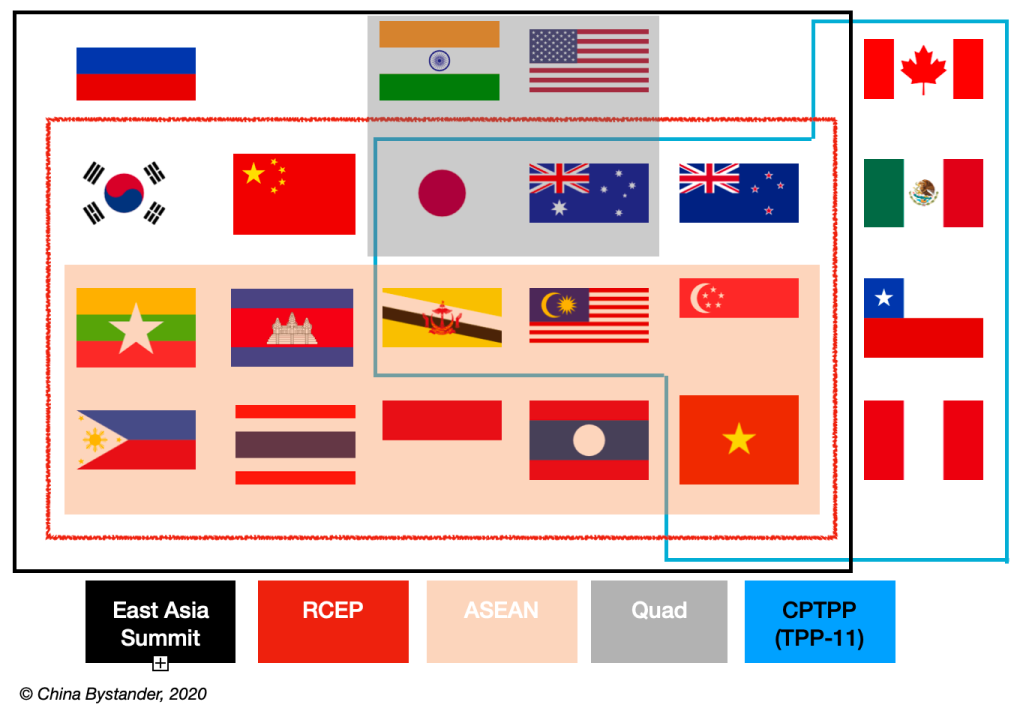
THE CHINA-STEERED Regional Comprehensive Economic Partnership (RCEP) will come into effect on January 1, bringing together China, Japan, South Korea, Australia, New Zealand and the ten ASEAN nations in the world’s largest free trading agreement (FTA).
The 15 nations account for more than half the world’s exports and almost one-third of its GDP and its population. More significantly, they will likely account for most of the world’s economic growth in the coming decades.
RCEP was signed on November 15, 2020, having been hurried forward by Beijing. Ratification by the required nine signatory nations was achieved on November 2, and the agreement will come into effect in the minimum stipulated 60 days. Indonesia, the Philippines, Malaysia and Myanmar are the only four nations left to ratify it.
About 90% of goods will be traded tariff-free within RCEP, although that is largely the case already as ASEAN has FTAs with Australia, Japan, New Zealand and South Korea. The bigger benefit will likely come from dismantling non-tariff barriers.
This will bolster China, Japan and South Korea by strengthening their supply chains in the region. Regional supply chains are likely to become more China-centric, and, as the largest economy, China will be well-positioned to dictate terms and technical standards.
RCEP’s less industrially advanced nations such as Cambodia and Laos will benefit less substantially and have been given extensive phase-in periods to ease the transition. (Long transitions, exceptions, exclusions and non-enforceability of many of its 20 chapters are quite a feature of RCEP.)
The raw materials, machinery, motor vehicles and consumer products sectors are likely to benefit most, but trade in agricultural products, always contentious, is not covered under RCEP. RCEP also ducks other controversial issues such as subsidies for state-owned enterprises and labour rights.
Trade in services will be liberalised along two tracks. One group of countries — China, Myanmar, Thailand, Cambodia, Laos, Vietnam, the Philippines and New Zealand — will open selective service sectors on a ‘positive list’ basis. The others will open all service sectors unless expressly excluded.
RCEP’s membership has considerable overlap with that of the Comprehensive and Progressive Agreement for Trans-Pacific Partnership (CPTPP). The latter addresses indirect barriers such as state-owned enterprises, subsidies, labour rights, environmental protections and climate change.
It also provides stronger intellectual property rights protections than RCEP. This may steer investment to RCEP members who are also part of CPTPP.
RCEP should help drive economic recovery in Southeast Asia in the short term as the region battles through the latest surge of Covid-19.
In the medium term, it should increase trade and investment within the region. Estimates vary widely, but there is agreement that it will be material and in part at the expense of other parts of the world.
This will accelerate the emergence of a China-centric regional economic sphere that has been occurring for some years and is distinct from markets in the West and the supply chains that feed them.
The shift of the world’s centre of economic gravity to the region would be slowed if the United States and the EU were to join one of the two groupings. Prospects for either are dim, with an increased number of bilateral trade agreements more likely, especially with security partners.
In the longer term, as RCEP’s member countries develop, they will have to address the structural, protectionist issues that the agreement has parked to the side. That will bring political tensions.


Pingback: Plain Talk On Taiwan Overshadows Wooliness of IPEF | China Bystander